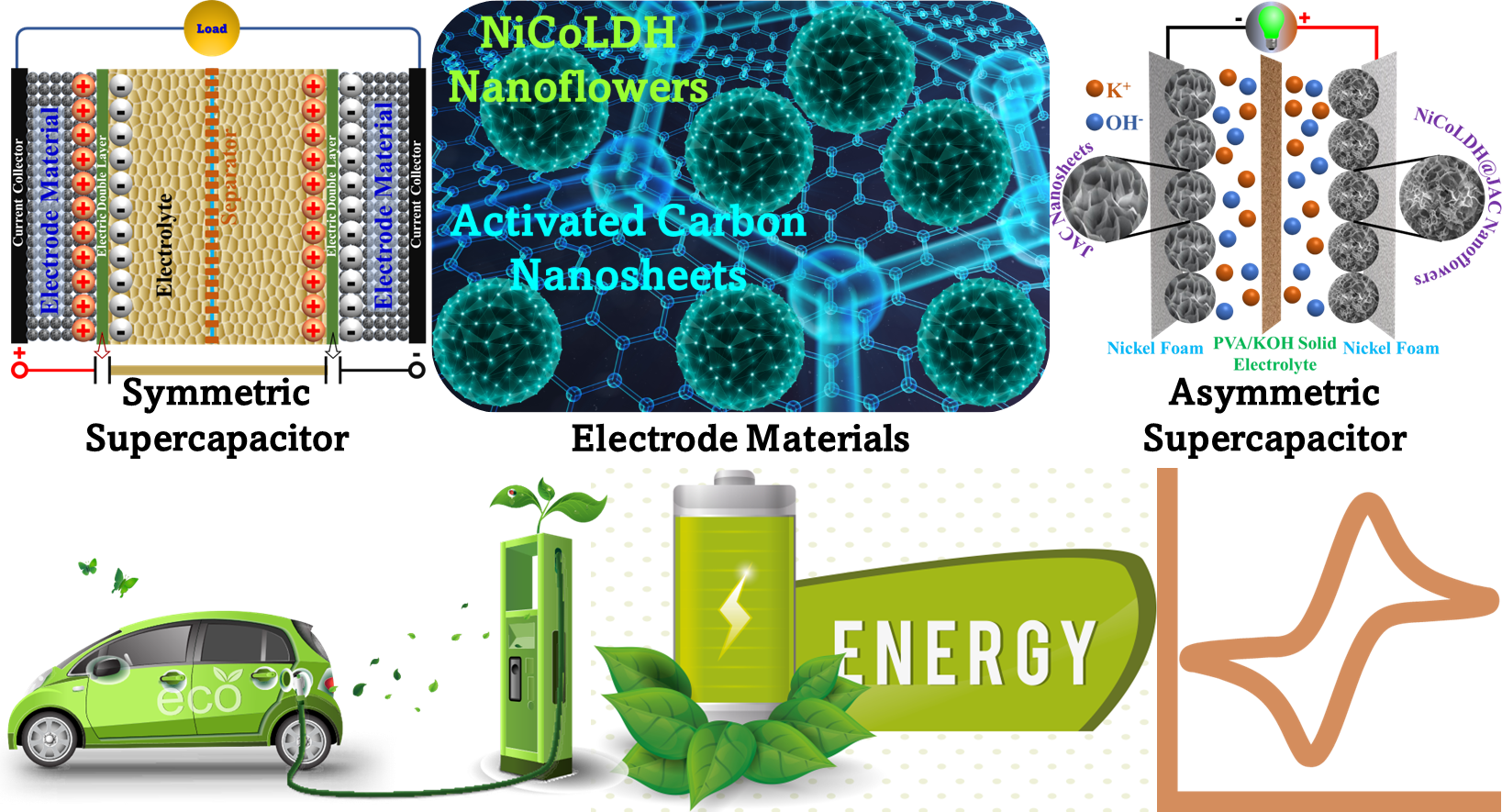Publication in the Prestigious Small Journal from Wiley Publisher
In a remarkable advancement in energy storage technology, a research team from the Interdisciplinary Research Center for Hydrogen and Energy Storage (IRC-HES) at King Fahd University of Petroleum & Minerals (KFUPM), Saudi Arabia, has achieved a significant milestone. The team's study, published in the prestigious Small Journal from Wiley Publisher, unveils the development of advanced high-energy all-solid-state hybrid supercapacitors. This groundbreaking research utilized a novel material comprised of nickel-cobalt-layered double hydroxide nanoflowers (NiCo-LDH) supported on jute stick-derived activated carbon nanosheets (JAC), marking a significant leap forward in the field of energy storage.

The team, led by the esteemed Prof. Zain Hassan Yamani and Dr. Md. Abdul Aziz, with key contributions from Dr. Syed Shaheen Shah, Dr. Muhammad Ali, and Dr. Abbas Saeed Hakeem, has utilized the unique properties of jute sticks, a form of biomass, to prepare high-quality activated carbon. This endeavor was meticulously carried out in the nanotechnology and energy storage lab at the IRC-HES at KFUPM.
The essence of this research lies in the innovative approach to developing electrode materials. The team has ingeniously processed jute sticks to derive activated carbon, which was then used as the electrode material in both symmetric and asymmetric supercapacitors. The result is a highly efficient supercapacitor device that boasts high capacitance, energy, and power densities and demonstrates exceptional efficiency and stability. This research introduces an all-solid-state hybrid supercapacitor, a blend of electric double-layer capacitors (EDLCs) and pseudocapacitive materials, and addresses the longstanding challenge of low energy density in conventional supercapacitors. The supercapacitor developed by the research team exhibits impressive performance metrics, including a specific capacitance of 750 F/g and an energy density of 100 Wh/kg. These figures set a new standard in the field and highlight the potential of this technology for practical applications.
The activated carbon used in this research work is prepared through a unique two-step method. This approach leads to a material with a high surface area and exceptional capacitance, underpinning the supercapacitor's remarkable performance. The research team also conducted a comprehensive theoretical study using Density Functional Theory (DFT) calculations, melding experimental and theoretical approaches tp provide deep understanding of the supercapacitors and the materials used in their fabrication, and paving the way for various electronics industries.
This research is a shining example of how innovative materials science and a deep understanding of theoretical principles can lead to tangible technological advancements. The successful development of this supercapacitor sets a new benchmark in the field and paves the way for more efficient and sustainable energy storage solutions with the dedication and expertise of the research team, as their work contributes significantly to the global pursuit of advanced energy storage technologies.
The published paper can be accessed through the following link: https://doi.org/10.1002/smll.202306665
